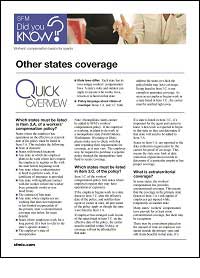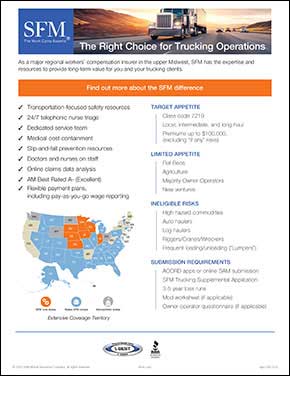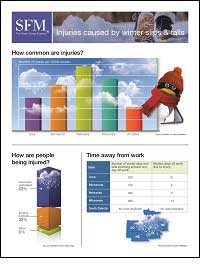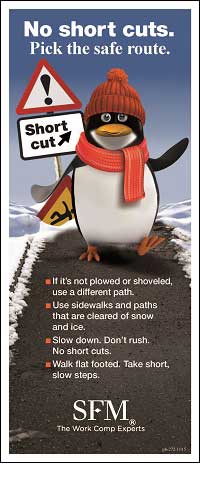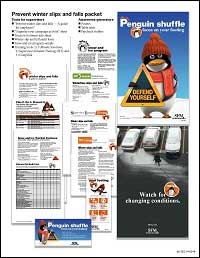Many employers don’t realize how much control they can have over their workers’ compensation premiums.
Because premiums are based partially on your loss history, you can avoid future premium increases (and maybe even see some reductions) if you take steps to prevent injuries and ensure your claims are well managed.
Of course, it’s always a good idea to get ahead of potential injuries. Being proactive and building a safety culture in the workplace helps. This can include:
- Creating safety committees
- Implementing safety walks
- Checklists to encourage safety
- Regular safety discussions between employees and leadership
Below are some of our top tips for controlling your losses and, as a result, your workers’ compensation premiums.
1. Have a list of transitional jobs ready for when you need it
List light-duty, transitional jobs that fit within a variety of work restrictions.
That way, when employees are injured, you can easily identify jobs that fit within their restrictions and get them back to work quickly. Delays of even a day or two can increase claims costs substantially by triggering wage-loss payments that would otherwise be unnecessary.
2. Consider all your options to bring the employee back to work quickly
Bringing employees back to work when they’re still recovering can sometimes require a little creativity. A few options include:
- Reducing the employee’s work hours or work days
- Bringing the employee back in a different position at a reduced wage
- Modifying the employee’s equipment or work area
- Swapping tasks with other employees or reorganizing work within the injured employee’s group
- Arranging for temporary work in a different area of the company
- Creating a new lighter-duty job that will be transitional and temporary
Many employers don’t realize that if they bring injured employees back to work at less than their full pre-injury wage, their workers’ compensation insurance will make up most of the difference.
3. Have a relationship with an occupational health clinic
Quality of treatment counts for a lot in medical costs and outcomes.
To find a good clinic, ask officials there whether they have experience treating injured employees and accommodate return to work so the employee can heal while on the job. Ask what information they’ll need from you in the event of an injury, such as an injured worker’s job description.
4. Have a point person for return to work
It helps to have one person who is accountable for getting injured employees back to work as soon as medically possible.
This generally includes staying in contact with the employee, working with the treating doctor and involving the employee’s supervisor.
5. Ensure that employees understand and follow any work restrictions
When injured employees don’t follow their doctors’ restrictions, it can result in costly claim complications.
Take the time to go through employees’ restrictions with them and discuss any aspects of the job that could cause them to do work beyond what their doctor has permitted. Also make sure they know they should follow their restrictions both at work and outside of work.
6. Stay in contact with your injured employees
Let injured employees who are off work know that you are concerned about their injuries and recovery, that you value what they bring to the organization and that you are looking forward to their return.
Keep up on the status, expectations and return-to-work date for each injured employee. Have a plan and stay in touch with the employee, supervisor and claims representative to make sure things stay on track.
7. Report injuries right away
As soon as you learn of an injury, the clock starts ticking toward state deadlines for paying or denying benefits.
Reporting right away keeps you in compliance with these laws and regulations, and allows your claims representative to be responsive to your employees. Delayed reporting can result in longer-duration claims and higher costs. (See our injury reporting page for ways to report.)
Watch out for communications breakdowns. Employees and supervisors need to know who to contact when an injury occurs, and your organization’s point person for reporting claims needs to act with a sense of urgency.
8. Analyze past injuries
Anytime an injury occurs, conduct an accident analysis to identify what caused it and how similar accidents can be prevented in the future.
You can also use your loss history reports to help spot problem areas and identify opportunities to improve safety.
9. Develop a wellness program
Studies show there is a connection between health issues — such as obesity, diabetes and hypertension — and higher workers’ compensation costs.
But that’s only one benefit of finding ways to encourage wellness among your workforce. Encouraging healthy lifestyles can also raise productivity and reduce health care costs.
Bonus tips
Hire smart
Make sure you’re hiring the best possible employees. Legally, you can’t ask job candidates whether they’ve had past workers’ compensation claims, but you can explain the job and its requirements and ask during the interview or in an application whether the applicant can perform the essential functions of the job. Be sure to explain the importance of safety, especially in jobs involving physical labor. Take the time to look into candidates’ backgrounds and talk to their former employers.
Pay close attention to safety
Establish good safety rules and watch for things that cause workplace accidents. Look for any patterns in what’s causing injuries. Correct employees with unsafe habits and promote the importance of workplace safety.
Originally posted May 2017; updated January 2025.
This is not intended to serve as legal advice for individual fact-specific legal cases or as a legal basis for your employment practices.
Want more content like this?
Get the latest Simply Work Comp blog posts in your inbox.


